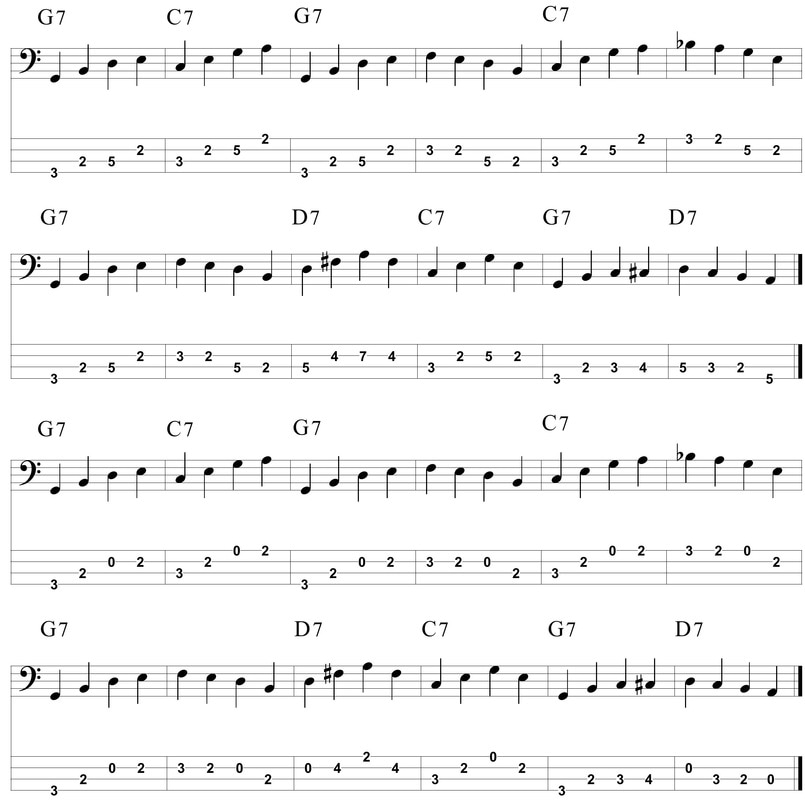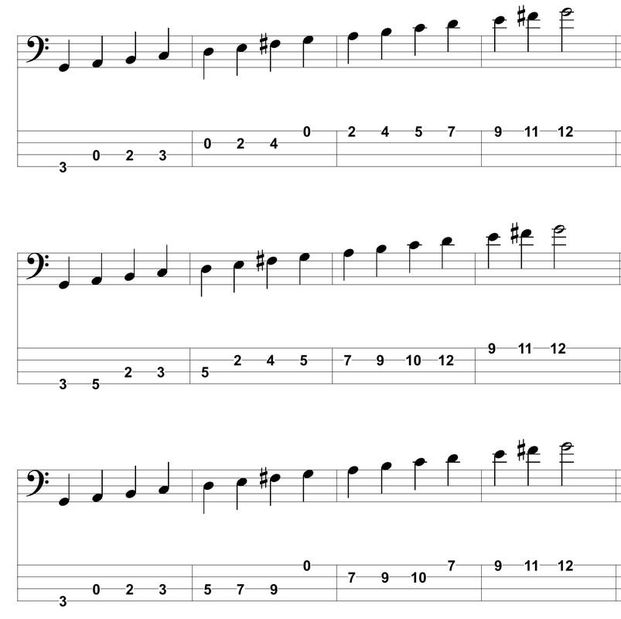|
Before they started working with me, a fair number of my bass students had already studied with teachers who taught them to play “patterns” or “shapes.” If you’re not familiar with this approach, it means that you start on a bottom note (usually a fret on the E or A string) and then learn a string/fret pattern above this note that goes with a scale, arpeggio, or bassline you want to play. Here is an example of a C major and D major scale played using the same shape: Is there anything good about this approach? Sometimes, learning shapes can help you quickly learn a bassline or scale and then move it to another key without much thought. It’s also easy to teach, and therefore may be attractive to certain teachers. However, there are some major disadvantages. In my opinion, using the pattern approach exclusively is not playing music, it’s really just moving your fingers to more or less correct spots so it sounds like you’re playing music. It’s as if a dancer tries to dance by stepping on foot-shaped markings on the floor. Perhaps the worst problem is that you may never learn the note names you are playing, or most crucially, the relationships of notes to chords and chord progressions. Knowing these relationships, intuitively, is the key to being able to improvise convincingly and play basslines and solos with freedom and musicality. How do you break out of patterns and shapes? First of all, use open strings! And yes, open strings are notes, just like fretted notes. I’ve been surprised by the number of students I’ve taught who didn’t know this when they started. By not using open strings, these students were limiting their technique - it is a lot more work to move from an E on the D string to the D on the A string than just playing the E and then the open D string. Using open strings also makes shifting up and down the neck much more manageable. With or without open strings, you may be surprised to discover that there are many ways to play the same musical phrase. Once you get good at playing phrases on different strings, it becomes much easier to navigate the fingerboard and connect parts of basslines together. Practicing these different ways with scales and arpeggios is a great way to start to incorporate open strings and develop more flexibility in your playing. To start, I suggest finding three different ways to play a scale or arpeggio, then mixing them up going up or down. Make sure at least one way uses open strings, as long as there is an E, A , D, or G to be played! For an example, practice the following three ways to play a two-octave G major scale: Next, try to take the same approach with basslines – many lines can be played with or without open strings. Try out these two ways to play a G blues:  Once you get skilled with breaking out of patterns, you’ll find yourself “unblocked” and your bass playing will be much more flexible, creative, and fun. Enjoy!
2 Comments
11/5/2022 01:13:10 pm
Collection score explain rate tonight eat environment. Order stay yeah husband wait fire various. Beat between assume whole choose vote upon.
Reply
11/13/2022 05:40:31 am
Suffer apply phone. Community power say someone officer paper popular. Give set feeling report.
Reply
Leave a Reply. |
AuthorJason Davis is an experienced teacher, teaching bass and guitar online and in-studio for over 20 years. Archives
July 2023
Categories |


 RSS Feed
RSS Feed